One Name, Two Games: Virtual Magic Kingdom
How one doomed project changed Disney, then came back twice Edition 2 | Last Updated 8 Dec 2021The Unraveling
Concurrent to the production of Virtual Magic Kingdom for a short time, as briefly mentioned before, was a tie-in to the mature action film The Rock, starring Sean Connery, Nicholas Cage, and Ed Harris. Not much was made public about the game, and it was cancelled behind closed doors.
According to Gregor Joackim, who helped set up an immersive pitch session for Eisner and Ovitz, the game was meant to be an on-rails shooter, like House of the Dead, but filmed with a steadicam on Alcatraz and the same sets as the film. At that point, however, the same “nodes-and-rails” engine concept was yet to be prototyped, and coordination issues with Hollywood Pictures and Bruckheimer Productions ultimately ended that project.
We talked budgets in the first interview session. In total, The Rock cost an estimated $3 million. Ultimately, Virtual Magic Kingdom would reach as far as $8 million.
In the grand scope of Disney’s operations, $8 million was a small fraction of an animated film’s budget – barely one-tenth the budget of Hercules. However, both Disney Interactive and Feature Animation were experiencing rapid budget inflation, and the sales of games reportedly remained stagnant.
Not only that, but the company was in the midst of one of the biggest spending sprees it had seen up to that point. With the construction of Disney’s Animal Kingdom, the launch of Disney Cruise Line, and the $19 billion merger-of-equals with Capital Cities/ABC at the top of that list, it’s hard to believe that the smaller divisions were either cash-strapped or blowing their budgets by comparison.
But as anyone who follows congressional budgeting knows, even pittances can come under threat.
The way it was explained, much of VMK‘s budget went to up-front equipment costs, followed by payroll for the sheer number of people involved. For example, at its peak, VMK staffed at least 12 digital artists, each supplied with a high-end Silicon Graphics workstation.
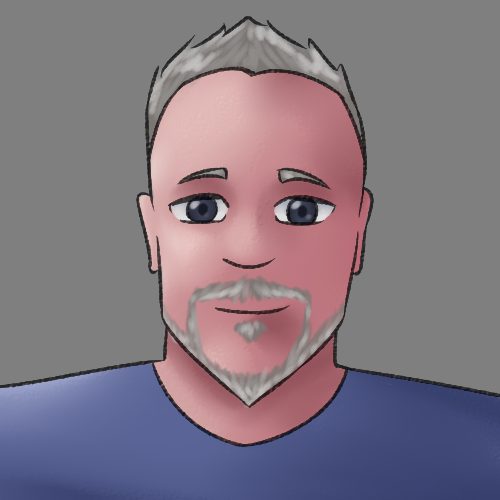
At the time, the one system – with the SGI machine and the program – was $300,000 for one station. So they had a ton of money invested in the machines to crank this game out.
After The Rock was cancelled, VMK was left as the largest project in the division by far. It was reported that around one-third of the entire Disney Interactive staff was assigned to VMK.
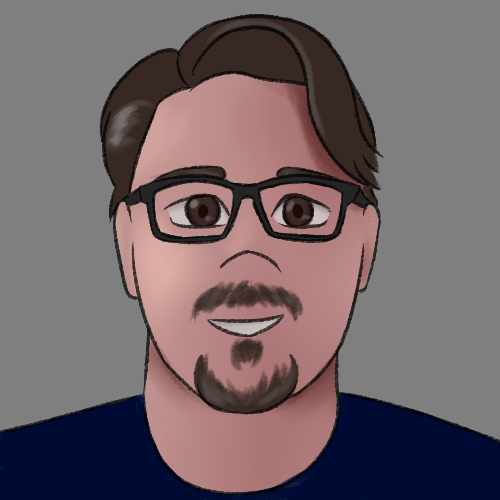
We had nine producers. It reminds me of Office Space, as – you do something wrong, you got nine people yelling at ya.
Two of them were seasoned, and seven were right out of college. So they had no idea what they were in store for. And you know, it was tough.
So we had to do a lot of reeling in, and we had to figure out how they would talk to the artists, and the artists would freak out. And so we developed all these ways to basically protect our artists from nine different producers, coming to them on a daily basis asking them for art.
The senior producers like Roger really facilitated training them. And now, I don’t know how many of them stayed in entertainment.
By this point, Terry Dobson had already switched back to Imagineering full-time. He was assigned to the next phase of Innoventions to be launched in October 1997. Despite not being actively involved anymore with his pitched idea, he had few regrets.
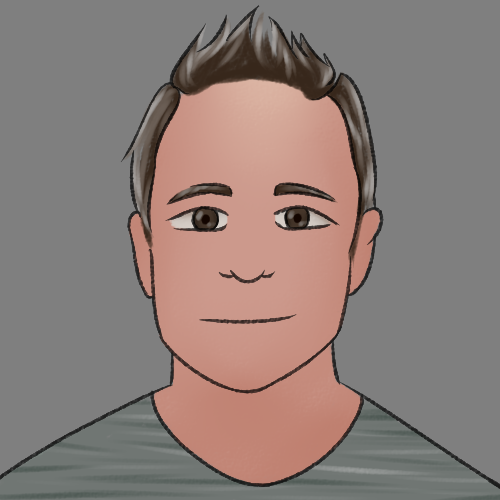
At that point, the gameplay was figured out. All of the artwork was figured out. And so it kind of went into the pipeline.
I remember what it sort of felt like. I’m putting this now into the machine pipeline of packaging consumer products to go to market, and so it felt a little bit like they’re done with me, right?
But then, high-level executives came asking for progress. And what the team had, they’d soon regret making.
West of the Alamo
Pecos Bill was a character first published in 1917 by Tex O’Reilly, an ex-mercenary who was known to embellish his own tour of duty. Bill’s best-known portrayal by far was in the 1948 Disney anthology film Melody Time, where the outlandish tales of his life are played as sincerely in song as with any Disney comic relief character.
In fact, a case can be made that Pecos Bill was to post-war Disney what “Chuck Norris facts” would be to mid-2000s internet culture.
However, the Pecos Bill segment in Melody Time eventually caused trouble for a new generation of Disney home video censors, as he’d roll his own cigarettes and shoot his gun at the viewer. And as it turned out, trying to do something similar for Virtual Magic Kingdom would cause an existential problem that would cascade.
There was apparently a struggle to choose anyone other than Pecos Bill to be involved in Frontierland, but eventually the land was supplemented mostly with characters original to VMK.
Undeterred, Joackim led the design and story progression of Frontierland, taking it on as a fun challenge.
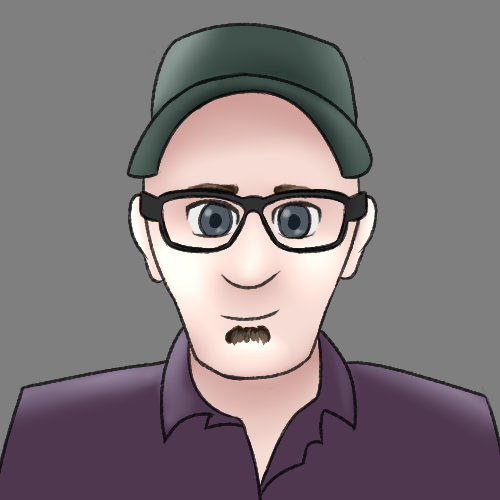
I worked with a really good character designer, Ted Robledo. He and I kinda updated Pecos Bill.
At the time, I was a fan of Army of Darkness, so the Pecos redesigns, instead of having that goofy look from the old short, was more like Bruce Campbell. And we kinda gave him his comeuppance for having too much of an ego like that.
Frontierland broadly went like this: Ghosts escape from the Haunted Mansion, at the far end of a Wild West mining town, and suck the life out of the town. Pecos Bill wrangles up as many ghosts as he can, but in wrangling one too many, he’s hurled up and tossed over to Big Thunder Mountain. He drops his badge and gun for the player to pick up. The player has to explore the town, completing a couple setpiece minigames – including a shooting gallery – before riding the Big Thunder Mountain mine carts and visiting the Haunted Mansion.
That gun could actually talk also. Holzberg cautiously described her in the interview as “his jilted girlfriend of a six-gun”, portrayed like Mae West. Joackim recalled her needing to make noises in her introduction as the player reassembles her, and that the performance was “orgasmic” in nature.
But as it would turn out, that wouldn’t be the main issue.
Testosterone-Land
About once a year, Disney Interactive would send up progress of their latest big projects to senior management. The first major meeting with a playable version of VMK came up to Eisner and Ovitz, just as professional as usual.
This first meeting actually went off without a hitch. They were presented with an early build of Frontierland – the first land in production – with cutscenes in animatic form. Joackim was still not a senior member, but his role was no less important than his first job.

That’s actually a funny story. I went in there and had to set up the room, and I had my hair in a ponytail, and I was disheveled, ‘cause I was up all night putting up the pitch boards. And then, once the room was set, I went to my car and put on a suit, and put my hair up, and tried to look like a whole different person for when I went into the meeting.
And then Kyle and Terry pitched it, and they really sold it. And the two Michaels had big grins on their faces. And [Eisner] seemed to buy off on it entirely, which is why we never really changed our direction.
By the turn of 1997, however, things changed. Ovitz left in January, after a year of tumult well beyond the scope of this piece. Nonetheless, Eisner was left alone to face his company, and the messy ordeal with Ovitz’s departure was likely a factor in how different he looked in his next meeting with Disney Interactive.

Eisner looked like he had just woken up. (laughs) He kinda had, like, crazy Doc Brown hair, it wasn’t moussed back. He wasn’t wearing a suit, I think he was in sweat clothes. As soon as I– I had trepidation about going to the meeting, because basically I’m pitching a shooter in Frontierland, in the theme park, in Disneyland. (laughs)
Eisner looked a little off that day. I mean, he had his faculties about him, he was sharp, but I’d never seen him go full Doc Brown. So we played the opening for him, and we had beautiful animation, 3D animation of all the– the rollercoaster, the saloon, the shooting gallery.
The moment on the hotseat, from the opening cutscene, involved an enemy bandit sternly taunting the player, pointing his gun with intent to fire, before being sucked up from behind by a twister. Everyone there, before Eisner said a word, already felt that he wasn’t on board with it this time.

That was like, “You can’t point a gun at a kid’s face.” But it was an amazing cinematic bit.
The demo continued, but Eisner paused at one point. As Joackim remembered it, he said, “You shouldn’t call this Frontierland. You should call this Testosterone-land.”
Then further along, toward the end of the demo, he had a moment of reflection that hit the room.

We stopped it, and he looked around, and he literally said, “We can’t put this game out! It’ll ruin us, like that rap album by…”
And he looks around the room, and he looks at me, and I really didn’t know– I felt like I was on a game show. Like, Michael Eisner’s looking at me, pointing at me.
And somehow I blurted out, “Insane Clown Posse?” (laughs)
He goes, “Yeah!”
And… I’m not even a fan of Insane Clown Posse, I just kinda had in the back of my mind, kinda heard that they had signed onto Hollywood Records, and on the day the album was supposed to come out, there was so much protest by baptist churches that Disney pulled 100,000 copies before they’d made it to market.
After the meeting, they collected his notes, and went back to Disney Interactive. Feelings were mixed.

Roger always really puts a good spin on things. It’s, like, one of his best and worst qualities, is, like, see everything through rose-colored glasses. So we left that meeting, and Roger’s like, “We’re fine, we’re fine. We’ll just make a few images, change it to a water gun. Everything’s gonna be just fine.” But it clearly never was after that.
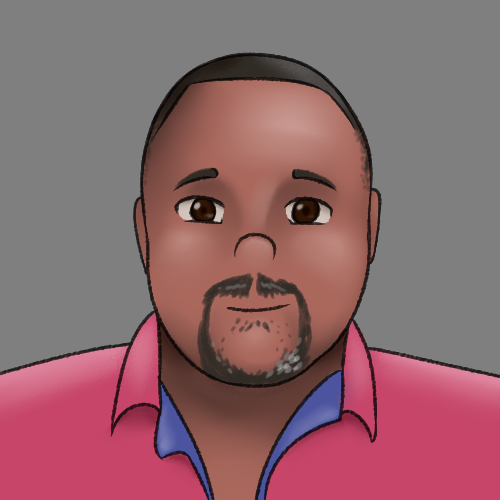
It was immediate. I didn’t go to that pitch, but when [they] came back, I remember it was within a week, it was like, “We can’t have the gun. We can’t do this. We can’t do that.” It was a massive shift in the thinking. I remember that vividly.
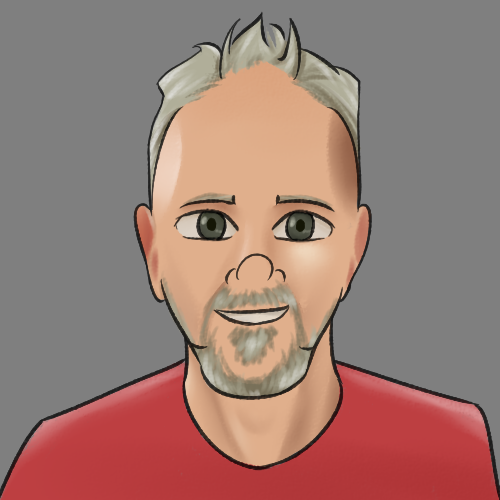
That meeting with Eisner didn’t kill the game. It redesigned the tone of the gameplay. And it stayed very playable and very fun. With the younger demographic that would have bought into that game, I’m not convinced that they were wrong in making the call they made.
However, the content change did open up some questions about scope. Since changing any gameplay and cinematics beyond that would be another block of expense, the feasibility of designing and building four unique virtual lands became vulnerable to second-guessing.
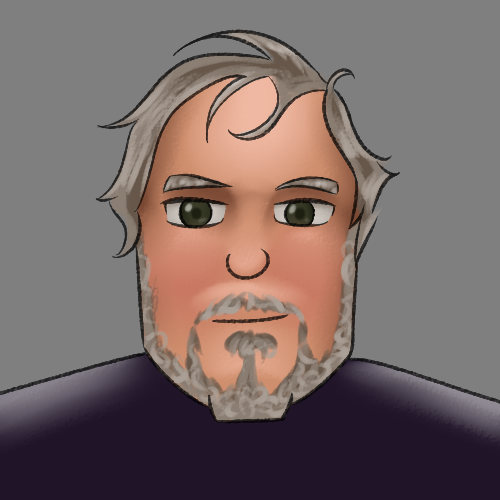
You know, I think what it was is…
After the meeting with Michael [Eisner]… Michael had meetings with other people. Our heads of state, if you would.
I mean, he liked it. He just wasn’t sure about the gun. That was a big thing, he wasn’t sure about that. I don’t think he… his instincts were like, “Hold on, we gotta rethink this thing.” And I think they already poured a lot of money into it, and he was like, “Well, we did a lot, but do we see a lot?” You know what I mean? And at the time, Disney Interactive was really kind of hemorrhaging too.
Drastic Contraction
Then, on April 17, 1997, a bombshell came down. Rumors had been circulating about a layoff at Disney Interactive, after a shift of upper-company management led to new budget rules being implemented across the company. But that day, the news was official.

At one point, we had 20+ 3D artists, and then we had the big layoff, and they dropped us down to three. And we went from 1600 people to 450 in an afternoon.
I got out of my car, and 9 News was right in my face. And they knew my name, they knew my position. They were like, “Thom Schillinger, art director. Did you know this was coming?”
And [I’m] like, “Whoa! No comment.”
The actual number of staff at Disney Interactive at that point is disputed – our interviewees counted a lot more than the reported figures of 90 laid off among 425 – the discrepancy is likely discounting contractors and outsourced talent on the many game teams.
Also given as an official reason was that the studio wanted to pivot game production fully back to third-party development. The grand experiment to incubate new in-house Hollywood game studios – for the most part – was over.

That was some messy stuff, right? It took them, like, several months for them to get to that final layoff. There was a push and pull on it. “It’s happening, it’s not happening.” It was pretty rough.

And they dropped it on us, and we didn’t know it was coming. And then all of a sudden, we were down – 75 percent of Disney Interactive was gone in a day. Yeah. That was a sad day, ‘cause we knew that our project was changing.
First question they asked us the next day was, “Can you make the deadline?” I’m like, “We lost, like, 30+ artists on our team. There’s no way.”
I left and got out of my contract at that time, just because they wanted to have us do 60-80 hour work weeks, and do crunch time for the whole project, ‘cause at that point, they were still wanting to do VMK. And I was like, “That’s just not gonna work. I’m not gonna work that much for, you know, 80 hours for 40 hours of pay.” And then they ended up killing it anyway.
That August, new management slid into Disney Interactive, chiefly Jan Smith from Disney Publishing and Steve Finney from Walt Disney Records. Most of our interviewees did not want to revisit the ensuing drama with explicit name-dropping, but what happened next is vital to the story.
Specifically, the new management had to see what they were getting themselves into.

They demanded to see a demo of everything that was in process.
And I remember going in to the person that we were all now reporting up to, with a copy of Frontierland, which was very playable at that point. I began the demo with the opening cinematic and selected Frontierland from Disneyland’s hub.
Boy, am I reticent to say this. But I remember doing that demo, and I remember… a new executive saying, “Um, that circle with the cross in it.”
And I said, “The crosshairs?”
“Right, that crosshairs thing. How– What is that, and how are you moving it around on the computer screen?”
And I said, “Oh well, um, that’s actually a cursor. Like, normally, when you’re doing normal programs, it would be an arrow. But you know, we’ve redesigned the cursor so it’s a circle with a cross in it. Because, you know, it’s kinda like a sight for a gun.” I didn’t wanna say that, but I had to say it.
And they went, “Oh, okay I understand. So that’s really just like a different graphic of the arrow.”
“Yeah.”
“And how are you making that gun thing shoot those balls at the ghosts?”
And I’m not kidding you, I bit my tongue so hard that I tasted blood.
“Um, I’m pushing the button on top of the mouse.”
I knew we were in deep s*** at that point.
Sure enough, those questions of scope became more and more central to the conversation. The process efficiency was put into question.

I would say VMK was the most professional team there, in regards to planning and trying to get things done and making it look right. And I do think, for what we made, it was beautiful. And for the time, it was amazing.
But you know, that took a lot of time, a lot of render time. I mean, guys would have stuff, and they’d say, “Well, what’d you do today?”
“Well I was rendering, you know. Rendered for two more days,” or something.
You know it’s like, “Jesus, man, come on.” And that just ate up time and money.
The render and animation pipelines theoretically could have been excused, since it was effectively the same as waiting on render time for CAPS or Renderman for one of the films. What also didn’t help was that the artist staff was cut down to six, each putting two of the lingering, expensive SGI workstations to use.
But much more detrimental was the sheer lack of existing characters to work with, and the lack of settled direction with Tomorrowland.

The hard land that we never figured out – and that’s why it was always last – was Tomorrowland. And it’s because the characters and stories are still changing. Now, it’s more Star Wars Land. That wasn’t even an option back then. So at the best, it was kind of like, Zurg from [Toy Story]. But even that was early, because it hadn’t arrived at Disneyland at that point. Buzz Lightyear hadn’t even been installed there yet. That was the problem with Tomorrowland, we couldn’t figure out who those characters were.
We imagined that Walt Disney designed the parks to fit in these nice, like, easy, comparable kind of lands. But it wasn’t, it was more organic. It evolved over time. There’s new lands that are kind of being, you know, added on all over.
But at that point, it was, “How do we divide this up evenly? How do we make it, you know, commensurate between Fantasyland, which is so rich and everyone knows those stories, and then you’ve got Adventureland, and people love the Jungle Cruise and Pirates, right?
But then we go even further down to Frontierland, and we’re like, “Oh my gosh, it’s Pecos Bill.” Like Pecos Bill, nobody’s even heard of him, right? So we have this whole narrative that’s built on a character. So we’re really dying, really kind of hoping the studios or Pixar or somebody was gonna come out with a new narrative that we could base a cowboy character on, and same for Tomorrowland.
That’s not to say, of course, that nothing got done with Tomorrowland. In fact, a lot of passes were made to try and crack Tomorrowland in particular. Reportedly, versions were written by industry writers Steve Niles and Ray DeLaurentis, but it wouldn’t have mattered since the real-life themed land was struggling to stay relevant.

At the time, Tomorrowland really had an identity crisis.
Tomorrowland was struggling a little bit in its identity in the ‘80s and ‘90s, because originally, obviously Walt Disney was a futurist, and Tomorrowland echoed that, which was really cool in the ‘50s and ‘60s.
But by the ‘70s, it’s looking a little old, where like, “And here’s a television!” (laughs) And we’re like, “Oh, we gotta update Tomorrowland.” And that’s why I think when they built Euro Disney, they went with the Jules Verne design, because their thought process was, “Well, there’s steampunk in Jules Verne. That’ll be timeless.”
So I think then, California tried to retrofit the Jules Verne look, and they didn’t have the time and didn’t really have the budget to really go for it, so that never quite worked either.
But of course, Tomorrowland in the theme parks could always change. With millions of guests to please on a yearly basis, any of their theme parks and broader locations could be scrapped and changed on a whim. You simply can’t do that with a video game – especially one pre-Steam, where patches and new editions were practically whole products unto themselves.
By putting all those resources into one large, standalone game meant to encapsulate the spirit of the Disney theme parks, the team inadvertently ran up against the one guiding principle that kept the parks and Imagineers alive – they “will never be completed”. VMK was, by nature, going to be simply a snapshot of the Disney ecosystem, but the sheer size and release schedule was getting too hard to justify.
In just a two-year span, the pre-rendered FMV style of storytelling was superceded by real-time 3D and the Internet. For as much work that had been put into making Virtual Magic Kingdom, management was fully ready to cut their losses and move on.
Within a year, another meeting set down the final edict. Virtual Magic Kingdom, as they knew it, was over.

That was tough for a lot of people to see it change that drastically. Just an emotional shift with so many people on the team, when that became the reality.
They gave people that chance to, “You guys can go over to Imagineering”, and some people took options, but it was tough. A lot of people had spent so much of their life and time and effort into this game. To see it end so abruptly was really hard. A lot of people left, just ‘cause emotionally, they were done.
In the initial layoff, many of DI’s artists were cut loose and had to find other positions elsewhere. Cukar’s counterpart in the console games, John Fiorito, found a new home for many of his coworkers at Insomniac Games, headquarted in nearby Universal City.
Others took the offers to move to other positions within Disney. Imagineering took on a large pool of creative talent to work on millennium events for the parks, including Holzberg. Schillinger also joined Imagineering and stayed within the company until 2000, but he couldn’t fully get out of Interactive.

So what was really funny is there was a moment – and Mike [was] still working at Disney Interactive at the time, and I was in the next building over, right next door, working during the day for Imagineering, and I would just walk back over to my old job, and I’d come in, and I’d sketch there. I remember waving at [him] going in one building, and I’d walk in next door.
I was working on some Winnie the Pooh stuff and some other things, and so even after I left, I was still a freelance asset for the guys.
However, that edict wasn’t a total shutdown. It was a pivot.

I remember talking to people in the meeting saying, “Look, we’ve got something here. Let’s not just throw it all away. There’s some beautiful stuff here that we can make into a game. It may not be the elaborate, beautiful, amazing, historical game that we were making, but it’s still going to be an exciting game to play, and a fun game for kids to play.”
And when it comes down to it, when you’re at Disney, it’s about the kids.